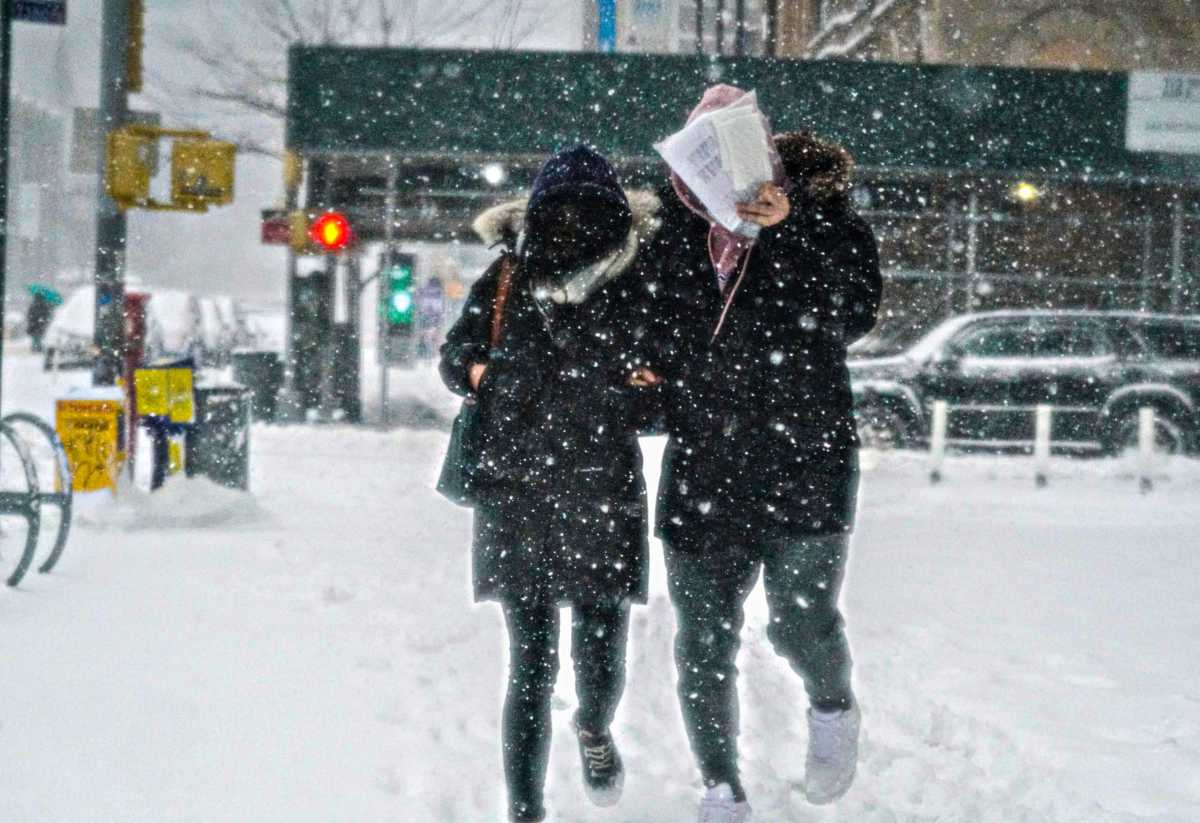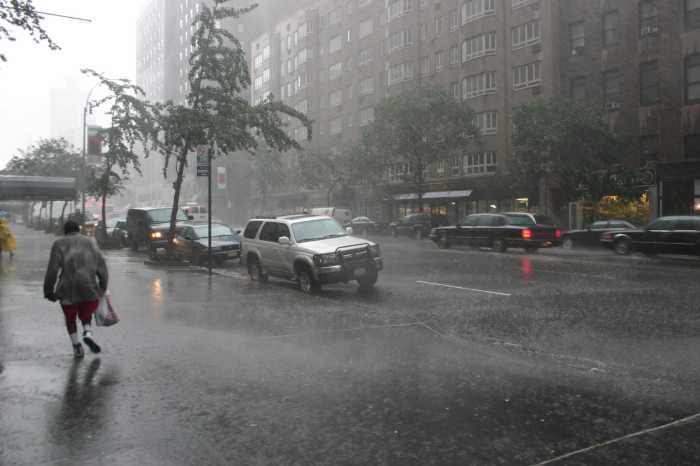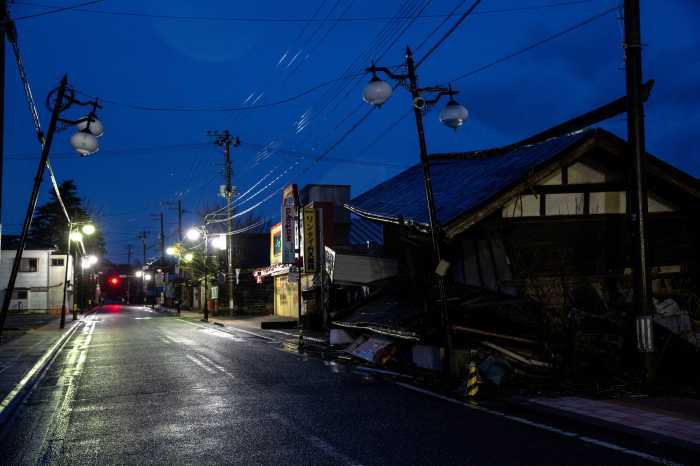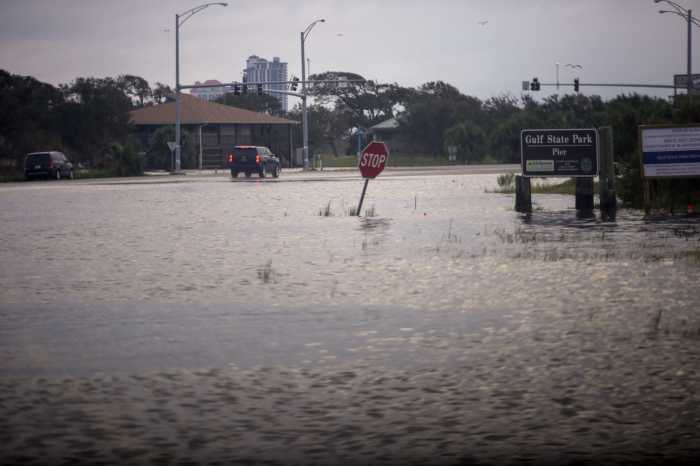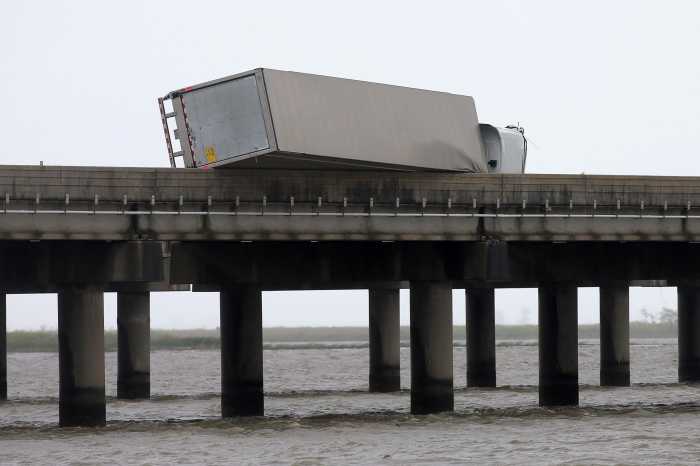Snowstorms aren’t becoming more common, one expert explained — but they are becoming bigger and bigger over time.
“It’s not so much the number of storms as the intensity of storms that is increasing,” said New York State’s climatologist and Cornell professor Mark Wysocki. “Maybe we’d get maybe three a year of these coastal storms and maybe every two or three years we’ll get a bad one. Now, it seems like it’s almost every year we get one, and sometimes we get two.”
The phenomenon comes as arctic ice caps melt because of global warming, causing sea levels to rise. The warmer sea temperatures mean more severe rainstorms, hurricanes, and snowstorms, Wysocki explained.
“Especially along the East Coast here, the oceans are very warm,” he said. “They’ve gone up by, I think it’s about five degrees in the last 10 years. And that plays an important role in the energy to these storms. Warmer temperatures mean more moisture, more moisture means more snow.”
This increase in moisture is part of New York City’s transformation into a warmer, rainier climate. Last winter was the city’s second warmest winter on record with an average 42.5 degrees, marking the region’s transition into a subtropical climate.
New York City isn’t the only region experiencing more hurricanes and snowstorms. Worldwide, climate change is expanding the atmosphere’s capacity for water, since hot air can hold more water molecules. That atmospheric moisture can condense, spurring extreme weather events and even causing droughts, Queen College professor Dr. Chuixiang Yi explained.
“Warming directly increases plant evaporation demand, leading to more water emitted by vegetated surfaces to the atmosphere,” he wrote in a 2015 paper. “Thus, duration between rain events becomes longer and hence drought would increase.”
Because of that added moisture from the melting ice caps, some parts of the world will see random bouts of intense rainfall or snow at random while others will experience the opposite, another meteorologist explained.
“Think of the polar vortex like a glass bowl, and you take a hammer and shatter the bowl, and the pieces fly all over the place,” said Steven DiMartino. “Where that glass ends up can mean a warm winter for us.” Or, a cold and snowy winter, like this year’s has been.
It’s not just fossil fuels and global warming that are to blame for the more intense snowstorms. The city’s landscape of concrete, asphalt, and metal absorbs more heat than natural surfaces, raising the city’s temperature compared to its more rural surroundings — a phenomenon called the Urban Heating Island (UHI) effect.
“Part of it has to do with the fact that 60, 70 years ago, we didn’t have as much of a buildup in terms of the suburbs,” DiMartino explained. “Now we’ve got concrete everywhere, there’s malls, there’s condos, you have highways … All that adds heat to the atmosphere.”
All these changes mean that rainstorms, hurricanes, and snowstorms will most likely get more severe in the coming years. That process can only really be slowed by a stark reduction in greenhouse gas emissions and an increase in greener infrastructure, but there’s no way to stop the trend now, DiMartino said.
“The way that we build would obviously be one factor, but in terms of something immediate, there’s nothing you can really do,” he said. “We’re kind of stuck with this.”
This story first appeared on our sister publication brooklynpaper.com.



